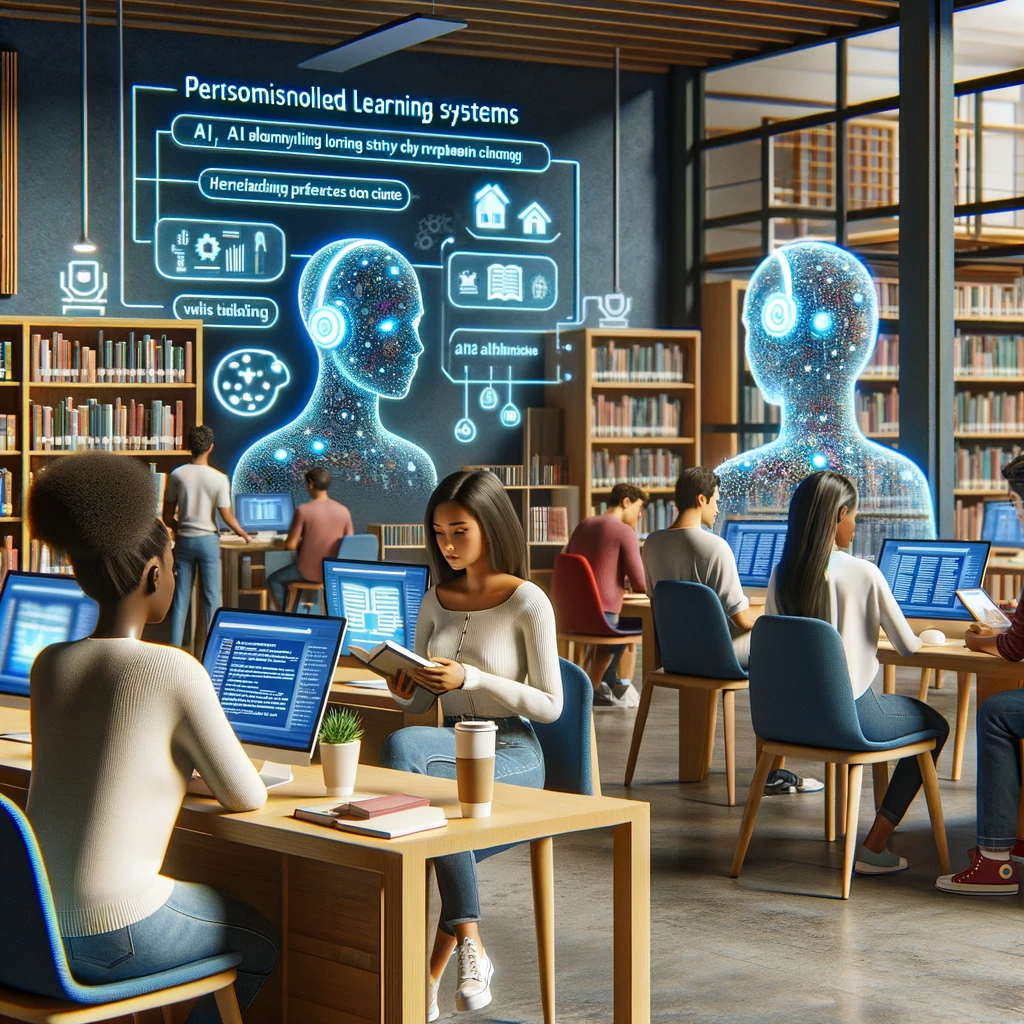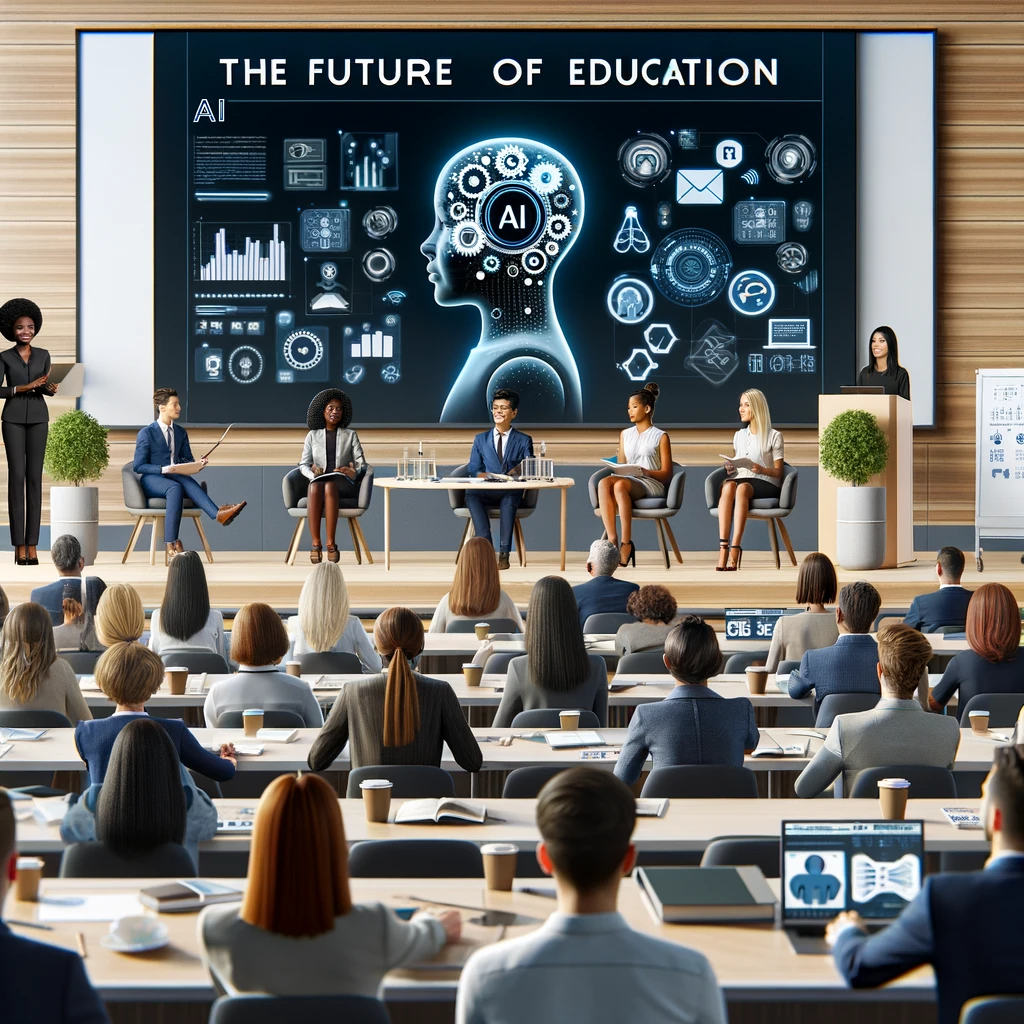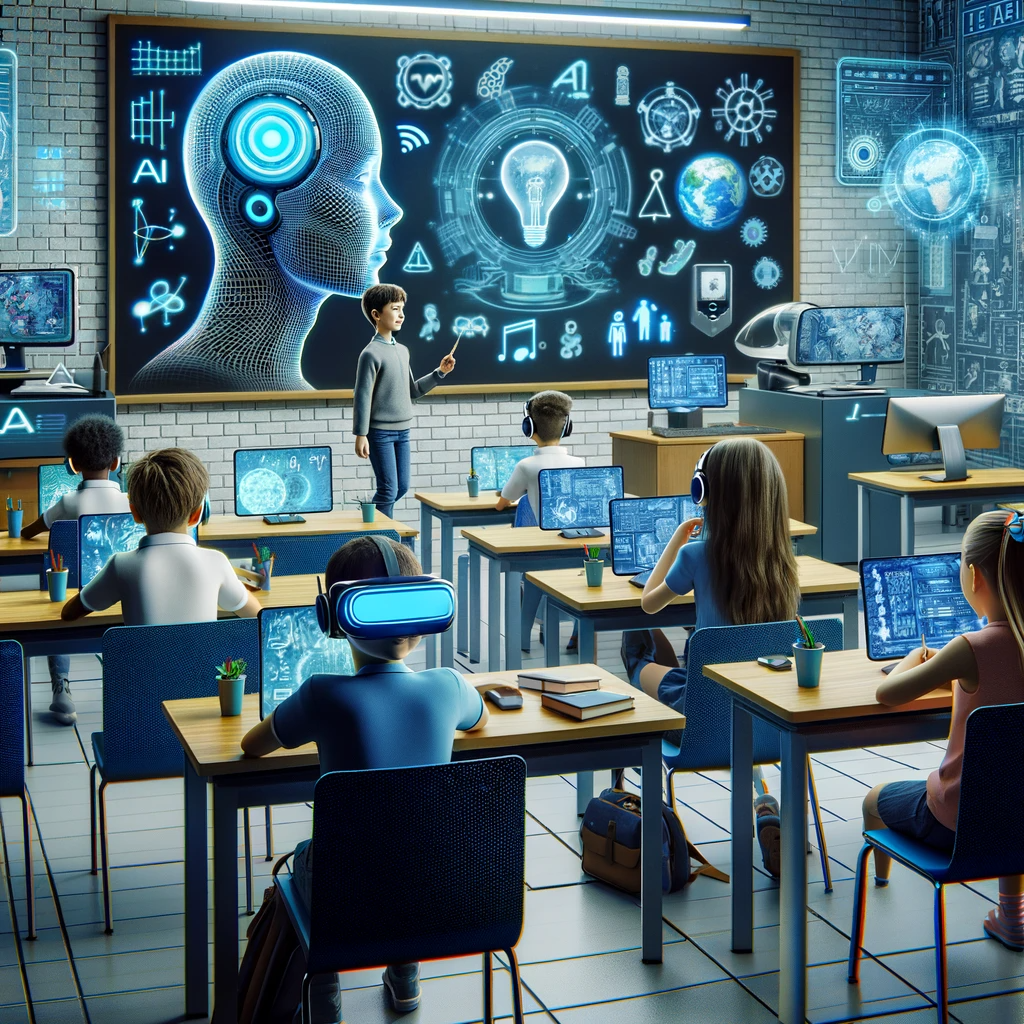Personalization Holds the Key
In the ever-evolving landscape of education, personalized learning has emerged as a key approach, tailoring educational experiences to meet individual students’ needs, abilities, and interests. At the forefront of this educational revolution is Artificial Intelligence (AI), which is progressively reshaping the way educators approach teaching and students engage in learning. AI technologies, including machine learning, data analytics, and adaptive algorithms, are increasingly being harnessed to create customized and dynamic learning experiences. These technologies analyze vast amounts of educational data, adapt to students’ learning progress, and provide tailored content, making education more effective and efficient.
This burgeoning integration of AI in education raises a pivotal question: Can AI be the key to unlocking the full potential of personalized education? By leveraging AI’s capabilities, is it possible to revolutionize the educational landscape, making it more inclusive, adaptable, and attuned to the unique requirements of each learner? To address this question, this article will delve into several critical aspects of AI in education.
We will first explore AI’s current applications in educational settings, highlighting how it is being used to facilitate individualized learning experiences. Next, we will examine the benefits and potential drawbacks of AI-driven personalization in education, scrutinizing how effectively AI addresses diverse learning needs while considering challenges such as data privacy and algorithmic biases. Finally, we will contemplate the future potential of AI in transforming educational methodologies, discussing its implications for teachers, students, and the broader educational system. Through this analysis, the article aims to provide a comprehensive overview of AI’s role in shaping the future of personalized education.

AI in Current Educational Practices
Artificial Intelligence (AI) has increasingly become an integral part of educational practices, introducing innovative approaches to personalized learning. By leveraging AI, educators can provide students with a more customized educational experience that caters to their individual learning styles, speeds, and needs.
One of the most prominent applications of AI in education is adaptive learning platforms. These platforms use algorithms to analyze a student’s performance and learning habits, and then tailor the educational content accordingly. For instance, platforms like DreamBox Learning and Smart Sparrow adapt in real-time to a student’s interactions, providing more challenging material if a student is excelling or additional support if they are struggling. This dynamic approach ensures that each student can learn at their own pace, thereby maximizing their learning potential.
AI tutors and assistants are another significant application in the realm of education. These AI-driven tools offer students personalized tutoring and guidance. AI tutors like Carnegie Learning and Duolingo provide step-by-step assistance in solving problems, offering hints and tailored learning suggestions based on the student’s previous responses and learning trajectory. They act as a supplement to traditional classroom teaching, providing additional support outside of school hours.
Moreover, AI is instrumental in personalized curriculum development. AI systems can analyze a wide range of educational materials and create customized learning paths for students. For example, Content Technologies, Inc., uses AI to create custom textbooks that match the curriculum requirements and learning objectives of specific courses. This level of personalization ensures that the curriculum is relevant and optimally designed to meet each student’s educational needs.
There are numerous instances where AI has successfully enabled personalized learning experiences and improved educational outcomes. For example, the Georgia Institute of Technology used an AI-powered teaching assistant, “Jill Watson”, built on IBM’s Watson platform, to answer students’ questions in an online course. This AI assistant was so effective that students didn’t realize they were interacting with an AI. Similarly, schools using adaptive learning platforms have reported significant improvements in student engagement and achievement, demonstrating AI’s potential to enhance learning experiences.
In conclusion, the current applications of AI in education, from adaptive learning systems to AI tutors and personalized curriculum development, are transforming the educational landscape. By analyzing learning patterns, assessing student performance, and adapting teaching methods, AI is enabling personalized learning experiences that cater to individual needs, thereby improving educational outcomes. These advancements signify a promising future for AI in education, pointing towards a more adaptive, personalized, and effective learning environment.
Benefits of AI-Driven Personalized Education
The advent of AI-driven personalized education heralds a new era in the field of learning, bringing with it a myriad of advantages that cater to the diverse and dynamic needs of students. By harnessing the power of AI, educational experiences can be tailored to individual learning styles, pacing, and capabilities, thereby overcoming some of the traditional challenges in education.
One of the primary benefits of AI in education is its ability to accommodate different learning styles. AI-driven platforms can analyze how individual students learn best—whether they are visual learners, auditory learners, or kinesthetic learners—and adapt the presentation of the material accordingly. For instance, a student who thrives on visual learning can receive more graphically-oriented content, while an auditory learner might benefit more from lectures and spoken explanations. This customization enhances the learning process, making it more effective and engaging for each student.
AI-driven personalization is also particularly adept at addressing the challenge of large class sizes. In traditional classroom settings, teachers often struggle to meet the individual needs of each student due to the sheer number of pupils. AI tools can step in to provide personalized attention and feedback, ensuring that each student’s learning requirements are met. For example, AI systems can offer additional practice exercises for students struggling with certain concepts or suggest advanced materials for those who are excelling, effectively providing a one-on-one learning experience in a crowded classroom.
Moreover, AI has the potential to provide equitable access to quality education. This is particularly significant for students with disabilities or those in remote areas. AI-powered tools can offer customized learning aids for students with disabilities, ensuring that they receive the support they need to succeed academically. For students in remote or underserved areas, AI can bridge the educational gap by providing access to high-quality instructional materials and personalized learning experiences, which they might not have had access to otherwise.
AI-driven education systems can also continuously assess a student’s progress and adapt the curriculum to their evolving needs. This real-time adjustment ensures that the learning process remains aligned with the student’s current understanding and skills, thus maximizing their learning potential.
In conclusion, the benefits of AI-driven personalized education are manifold. By offering tailored learning experiences that cater to individual styles, pacing, and capabilities, AI can effectively address traditional educational challenges such as large class sizes and diverse student needs. Additionally, its potential to democratize education by providing equitable access to quality learning resources marks a significant step towards an inclusive educational landscape. As AI in education continues to evolve, it holds the promise of transforming the educational experience into one that is more personalized, effective, and accessible for all students.
Limitations and  Challenges of AI in Education
Challenges of AI in Education
While AI-driven personalized education offers numerous benefits, it also faces significant limitations and challenges. These issues range from the need for high-quality data and potential biases in AI algorithms to broader concerns regarding data privacy, ethical considerations, and the increasing dependency on technology in educational settings.
One of the primary limitations of AI in education is the dependency on large volumes of high-quality data. AI systems learn and adapt based on the data they are fed, and any shortcomings in this data can lead to suboptimal educational outcomes. For instance, if the data used to train AI algorithms is not diverse or comprehensive enough, the AI may not effectively cater to the wide range of learning needs and styles present in a typical classroom. This issue is compounded by the potential for biases in AI algorithms, which can arise from biased training data or flawed algorithm design. Such biases could lead to unequal or unfair educational experiences, reinforcing existing educational disparities rather than alleviating them.
Data privacy and ethical considerations are other significant concerns in AI-driven education. As AI systems collect and analyze detailed data on students’ learning patterns, behaviors, and performances, questions arise about who has access to this data and how it is used. Ensuring the privacy and security of student data is paramount, particularly in a time when data breaches and misuse are increasingly common. Additionally, there are ethical concerns about the extent to which AI should be involved in shaping students’ educational experiences and the potential for over-reliance on technology in decision-making processes.
Integrating AI into traditional educational systems poses its own set of challenges. For teachers, the introduction of AI in the classroom requires new skills and teaching methods. Professional development and training are essential to equip educators with the knowledge and confidence to effectively integrate AI tools into their teaching. Moreover, there are often significant infrastructure requirements to support AI technologies, including reliable internet access and adequate hardware, which can be a barrier, especially in under-resourced schools.
Furthermore, there can be resistance to technological changes within the education sector. Teachers, administrators, and even parents may be skeptical or apprehensive about the role of AI in education, fearing that it may replace human educators or diminish the quality of education. Addressing these concerns requires clear communication about the role of AI as a tool to enhance, not replace, traditional teaching methods and human interaction in the classroom.
In conclusion, while AI has the potential to transform personalized education, it is not without its limitations and challenges. Addressing issues related to data quality, biases, privacy, ethical considerations, and integration into existing educational systems is crucial for the successful and equitable implementation of AI in education. As we navigate these challenges, the focus should be on harnessing AI’s capabilities to complement and enrich the educational landscape, rather than viewing it as a panacea for all educational challenges
The Future of Education with AI
The future of education with AI holds both promise and complexity, shaped by ongoing technological advancements and emerging trends. As AI continues to evolve, it is poised to have a profound impact on education, from changing traditional teaching roles to redefining classroom dynamics and addressing issues of educational equality.
Looking ahead, the integration of AI into education is likely to become more seamless and sophisticated. AI algorithms will become increasingly adept at understanding and adapting to individual learning styles and needs. This will lead to a more personalized and dynamic learning experience for students, where AI-driven platforms can provide real-time feedback, suggest tailored resources, and create adaptive lesson plans. As a result, educators may transition from the role of content deliverers to facilitators of personalized learning journeys.
However, the evolution of AI in education also raises questions about the future of traditional teaching roles. While AI can augment teaching and provide valuable support, it is unlikely to replace the unique qualities of human educators, such as empathy, mentorship, and emotional connection. Therefore, the future of education may see a shift towards a more collaborative model, where teachers work in tandem with AI systems to create the best learning experiences for students. This collaboration can allow teachers to focus on areas that require human expertise, such as fostering creativity, critical thinking, and social skills.
Classroom dynamics may also undergo transformation. With AI-driven personalized education, students can progress at their own pace, leading to a more individualized and less uniform classroom experience. Group activities and projects may become more focused on collaborative problem-solving, creativity, and critical thinking, rather than standardized testing and uniform curriculum.
Addressing educational equality will be a crucial consideration in the future of AI in education. AI has the potential to bridge educational gaps by providing personalized support to students with diverse needs. However, it also poses risks of exacerbating inequalities if access to AI-driven education is not equitable. Ensuring that all students, regardless of their socioeconomic background or geographical location, have access to AI-enhanced learning opportunities will be a vital aspect of future educational policies.
Beyond the classroom, AI in education has broader societal implications. It can help prepare students for an AI-driven world by imparting essential digital literacy and problem-solving skills. Moreover, AI-driven education can align curricula more closely with the demands of the future job market, where automation and AI will play a significant role. This alignment can better equip students with the skills and knowledge needed for success in the evolving workforce.
In conclusion, the future of education with AI holds the potential to revolutionize the learning experience, making it more personalized and adaptable to individual needs. While it may reshape teaching roles and classroom dynamics, the collaboration between AI and human educators can create a powerful educational environment. To realize the full potential of AI in education, it is essential to address issues of educational equality and prepare students for an AI-driven future, where adaptability and digital literacy will be key to success.

Conclusion
The integration of Artificial Intelligence (AI) into education has the potential to revolutionize the learning experience through personalization. This article has explored the current applications of AI in education, the benefits it offers, the limitations and challenges it presents, and the future possibilities it holds.
AI in education is already enhancing the learning process by providing tailored experiences for students, catering to their individual needs and learning styles. It addresses challenges such as large class sizes and diverse student populations, making quality education more accessible. However, it also raises concerns about data privacy, ethical considerations, and the need for a balanced approach.
The future of education with AI promises further advancements, with AI algorithms becoming more adept at personalization. This will change the role of educators, leading to a collaborative model where teachers work alongside AI systems. Classroom dynamics will shift towards individualized learning, emphasizing creativity and critical thinking. Ensuring equitable access to AI-driven education will be crucial.
Societally, AI in education can prepare students for an AI-driven world and align curricula with future job market demands. However, it requires careful consideration of ethical and privacy issues.
To harness the full potential of AI in education, a balanced approach is essential. Ongoing research, ethical considerations, and collaboration between educators, technologists, and policymakers are vital. The goal should be to create an educational landscape that combines the strengths of AI with the unique qualities of human educators, fostering a dynamic and equitable learning environment for all.
